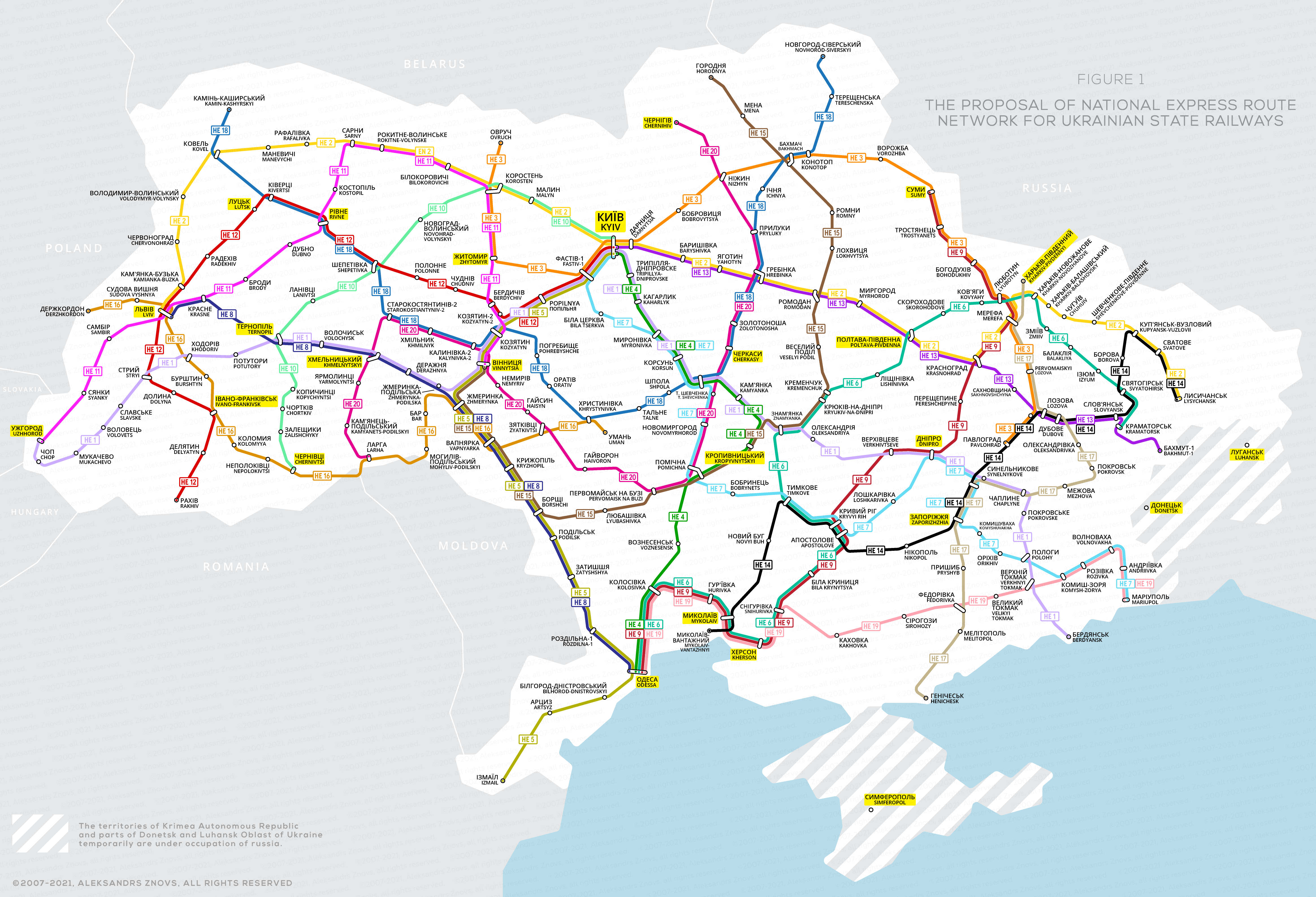Criticism
The state railway company of Ukraine Ukrzalyznitsia (Укрзалізниця), due to insufficient funding from the state, as well as for other reasons, cannot provide the constantly growing demand for the passenger services. In addition, the typically Soviet-like thinking of the carrier’s leaders does not help to improve the situation in any way. As a result, citizens simply choose the bus.
The way to go
If we talk about long-distance passenger trains (Intercity), at first glance we can see the drawbacks that could have been avoided even without significant costs. Nowadays, the main goal of the company is to organize journeys that are intended to deliver large masses of passengers from the terminus till terminus. Besides, many train routes have the same starting/ending stations (for example, Kyiv, Kharkiv) – such circumstances force passengers to make completely unnecessary transfers, losing their time and comfort. The routes that often duplicate each other are striking as well.
For Ukraine, the country with a well-developed railway network, the optimal solution would be to create the Intercity train network connecting all regional administrative centres. If possible, most routes must avoid overlapping and cover as many railway branches as possible (mostly to unload the most overcrowded lines), which would provide the passenger with a wide choice of travel options to the chosen destination, as well as evenly distribute traffic, bringing the space also to freight trains.
It would be important to change the philosophy of long-distance trains in the country – these could be even very long routes with certain time intervals depending on passenger quantity and other needs. Passengers could use these routes both for covering long distances and for one or two stations like a hop-in & hop-on bus in the city. The passengers travelling between two termini in most popular destinations could be offered the special super-express train service (e.g. Kyiv – Odesa, Kyiv – Lviv, Kharkiv – Odesa, Dnipro – Odesa etc.).
In order for the efficiency of transportation to be very high, the frequency of express train journeys of different routes must be optimized to minimize the waiting time at transfer stations until 30-40 minutes or even less. In the same time, in the name of comfort, the traffic of regional and local trains would be adjusted to the departure and arrival of express trains.
It is important to keep the day-schedule on very long routes also during the nighttime. If the train crosses the frame of the day time, there could be introduced additional sleeping car services for each long-distance route.
As for the rolling stock, the well-proven push-and-pull option, where a locomotive plays the role the “head” of one side of the train, but a special head-carriage on the other is the solution. It could be the best and the cheapest option to operate Intercity services. All cars (including the head-carriage) do not have motor traction, this role is assumed only by the coupled locomotive. It gives flexibility and maintenance cost reduction.
On the diagram below (Figure 1) you can see an example of a route network (to see the highest possible quality: click on image, then right and open it in the new tab):
Conclusions
As you can see, twenty routes would be definitely enough for the whole country, although this number can be even reduced. Such a few routes will greatly facilitate the scheduling of passenger and cargo trains in all possible directions. Additionally, on some overlapping routes segments, the coupling and uncoupling of different route trains can relieve the load on the railway line even more.
The proposed concept of the Intercity network in Ukraine is not a utopia, it is neither a new solution. The concept is already used in many countries with excellent results. Of course, everything requires a bunch of money, and in the railway sector, this is a fairly large investment. Nevertheless, you can start from the humble wish – to optimize the routeing scheme of train traffic. Anything is possible, you just have to wish!










